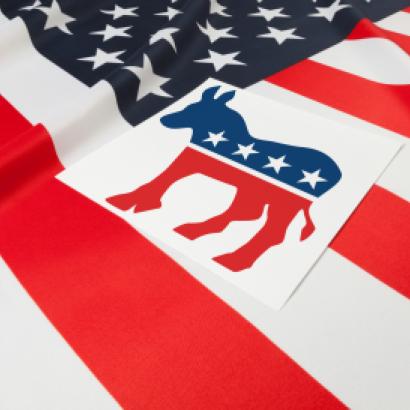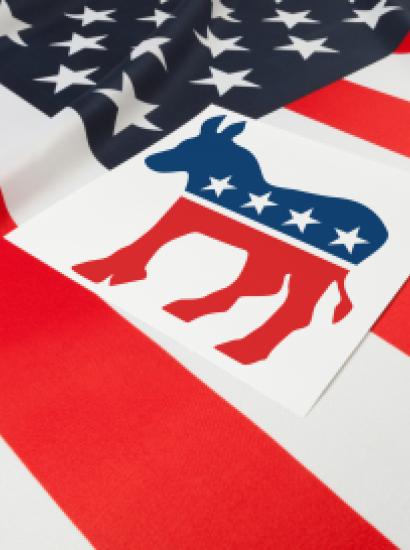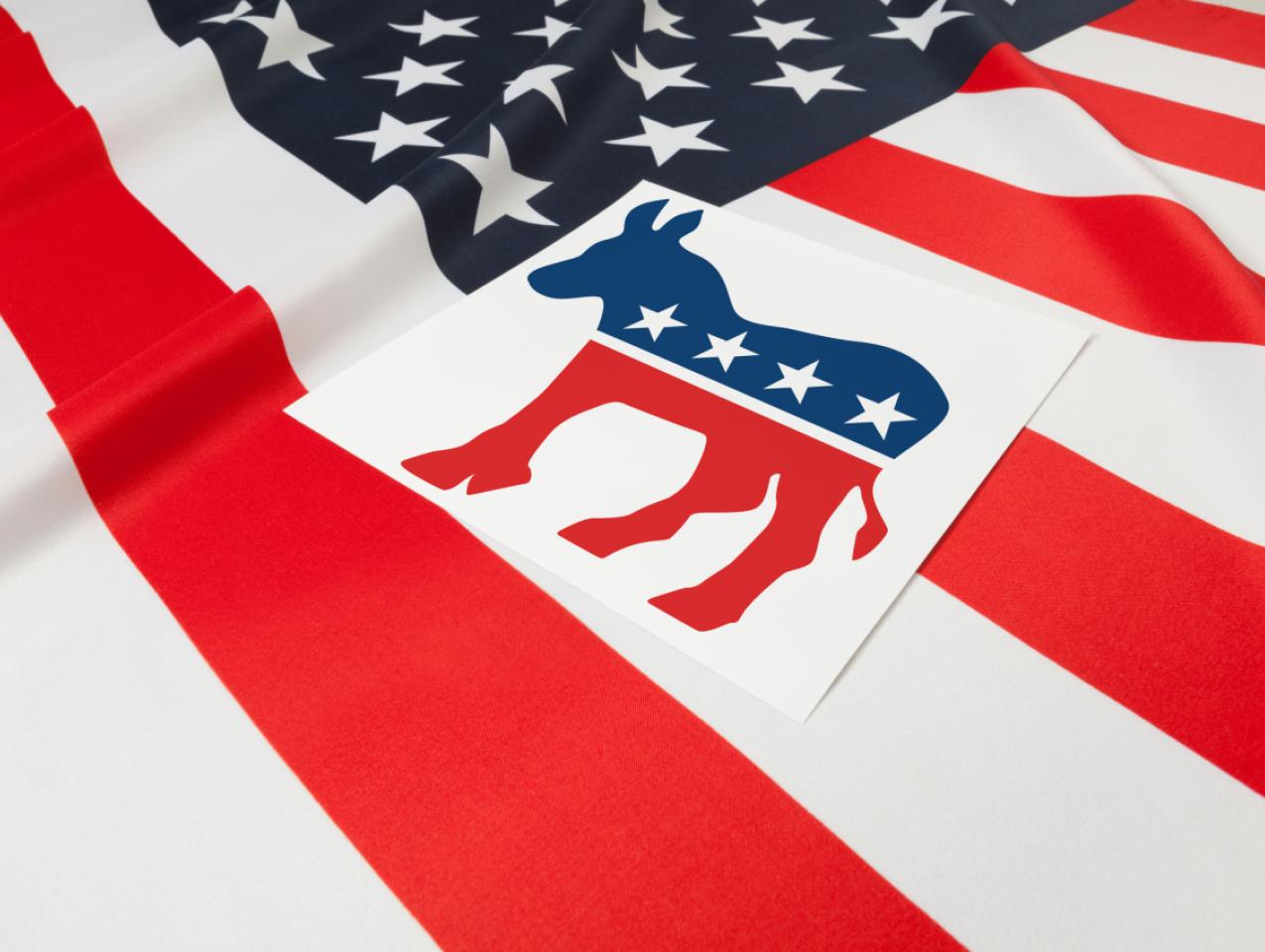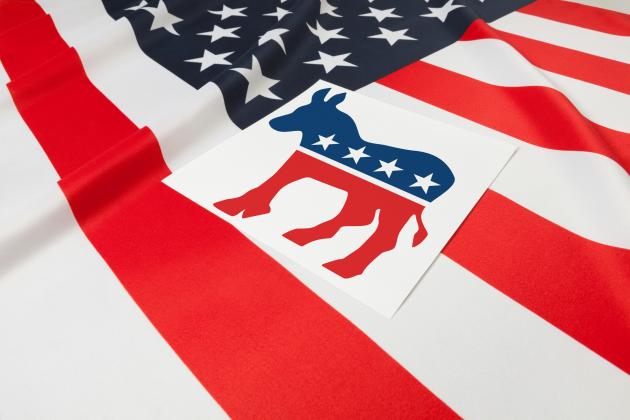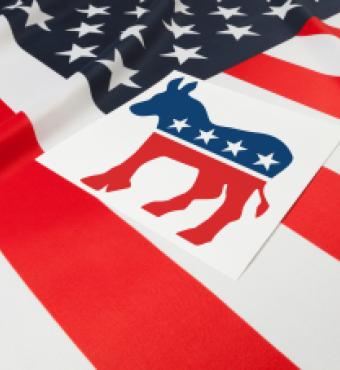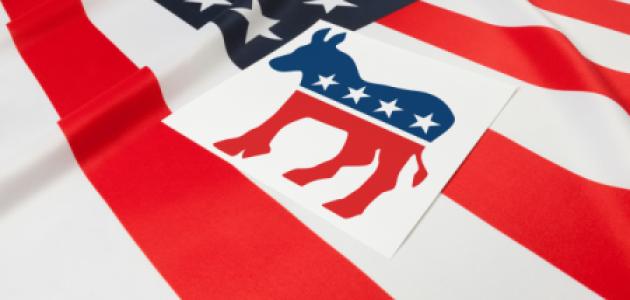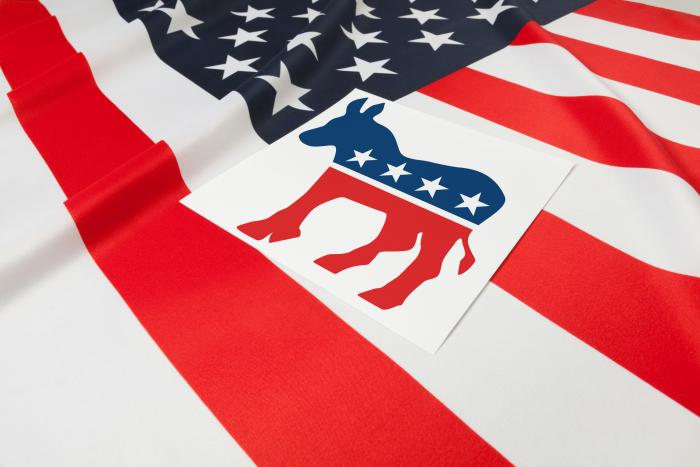If it’s political drama you seek in the form of a cliffhanger of a presidential contest, look somewhere other than California.
At least, that’s the takeaway from last week’s Berkeley IGS Poll, which showed a pair of presidential races with all the uncertainty of death, taxes, and glorious West Coast sunsets.
On the Republican side, former president Donald Trump was the choice of 55% of likely voters, up 11 points from three months ago, while Florida governor Ron DeSantis placed a distant second at 16%, a 10-point decline over the same time span.
The Democratic numbers were even more lopsided. President Joe Biden received 66% support, to only 12% for environmental attorney Robert F. Kennedy Jr. and author Marianne Williamson combined (with Biden also holding a 51%–31% lead over Trump in a hypothetical November matchup).
So what comes next for the Golden State and the field of GOP hopefuls? That’s obvious: a September 27 debate at the Ronald Reagan Presidential Library and Museum in Simi Valley—a supposedly forward-looking, two-hour discussion that may instead turn into a referendum on the last Californian to serve as president. Witness former vice president Mike Pence’s recent anti-populism speech in New Hampshire evoking “a Republican time for choosing” (echoing the title of a fabled Reagan speech) and his call for a sunnier, more Gipper-esque approach to conservatism.
As for Democrats, the party’s outlook is likewise opaque, as evidenced by this recent CNN survey. Perhaps the most startling data point: while 67% of Democratic and Democratic-leaning voters see Biden as their party’s likely nominee (up from 55% in May), the same two-thirds percentage believes the party should nominate someone else (up from 54% in March). If that weren’t bad enough for the president, this Associated Press–NORC poll has 69% of Democrats saying Biden is too old to carry out a second term.
So where does this leave California, one of the nation’s bluest states, with plenty of elected Democrats who see themselves occupying the Oval Office one day?
Ironically, out in the cold, if the following scenario were to come to life.
Here, I refer you to a recent column in The Bulwark, which hypothesizes a way for Democrats to (a) put forward a younger nominee (with Biden turning 81 in November) and (b) improve the party’s chances of defeating Trump in 2024 by holding on to at least one state that went from red to blue in 2020 (that would be Georgia, which Biden carried by fewer than 12,000 votes).
The suggestion: a Democrat ticket of Michigan governor Gretchen Whitmer and Georgia senator Raphael Warnock.
Noticeably not suggested: California governor Gavin Newsom or, for that matter, the highest-ranking Californian in the federal government, vice president Kamala Harris—both in their mid-to-late 50s and presumably willing to be the Democrats’ standard-bearer in 2024.
The snub of Harris is understandable, given that she’s arguably a tougher sell than Biden (the RealClear Politics Poll Average has Harris at a 56.5% job disapproval vs. 54.1% for Biden, as of September 12).
As for Newsom, one could dismiss his absence from the “dream ticket” due to the first of the four qualifications involved in shaking up the ticket (“two leaders from swing states who can provide generational change, a fresh start, and a far more serious threat to Trump than Biden can”).
The last time California was anything close to a presidential “swing state”? Perhaps the 1992 election—and even then, Republicans eventually ceded the Golden State.
Still, there might be another reason to explain why Newsom was passed over—his party’s insistence upon identity politics (Newsom likewise is obsessed with gender and race, for example, his vowing to appoint a Black woman as an interim successor should California senator Dianne Feinstein opt for early retirement). The Bulwark column admits as much in describing the Whitmer-Warnock ticket thus: “Young. Dynamic. Diverse. Competent and experienced. Broadly appealing. Can mobilize core voters. Would deliver two battleground states. Those are seven big boxes already checked.”
Just as a Democratic president can’t reverse the aging process, neither can a Democratic governor change the fact that he’s identified for his entire political career as a White male (in fact, he’s the only straight White male in this list of five possible Biden successors). And that may prove to be Newsom’s undoing as a national prospect in the unlikely event that Biden changes his mind about seeking reelection and the choice of the next Democratic nominee becomes the stuff of backroom deal-making.
Scenario one: Biden accepts his party’s nomination in Chicago, gives a stemwinder of an oration on the night of August 22, 2024, that sounds a little too much like a farewell address, and then does precisely that—he quits the race—not long after Labor Day.
Who then becomes the Democratic presidential nominee? It’d be up a majority of the Democratic National Committee’s national committee members to decide (about 350 elected officials and party insiders in all, including 32 members from California).
Note: while Newsom and Harris are not DNC members, Whitmer just happens to be one of three DNC vice chairs.
Scenario two: Biden waits until after the primaries but prior to the convention to take himself out of the race—the surprise announcement coming at a point when convention delegates have been chosen and his political team has control over the proceedings (this scenario was floated during a recent Ricochet podcast featuring Washington Post columnist Henry Olsen).
The appeal of this scenario (to journalists, at least): the possibility of a brokered national political convention, something the nation hasn’t witnessed in over six decades. And that raises the question of Biden’s role in choosing his successor, should he leave it to convention delegates to decide.
In 1952’s contested primary, then president Harry Truman opted for then Illinois governor Adlai Stevenson. (Part of Truman’s motivation: his belief that choosing a Democratic nominee from a southern state with Jim Crow laws in place—Tennessee senator Estes Kefauver and Georgia senator Richard Russell being the two options—would dearly cost the party crucial Black and northern liberal votes.)
Biden’s calculation 62 years later? Odds are, it would be pretty much the same as the same as Truman’s: throwing his political weight behind a presidential nominee not likely to alienate his party’s minority and progressive voting blocs.
As for Newsom, he could stew over The Bulwark column.
He can also keep insisting that he’s not a candidate for president in 2024, as he did late last week (though if Newsom realty wanted to stop the speculation, he’d stop doing interviews on MSNBC shows that are all about inside-the-Beltway intrigue).
Or there’s another option for California’s governor. He can show some leadership on a topic he’s done his best to sidestep: reparations for Black Californians.
It’s been nearly three months since the state’s Reparations Task Force (formally, the Task Force to Study and Develop Reparations Proposals for African Americans) forwarded its recommendations to the State Legislature (here’s the report’s executive summary). The task force consists of nine members, five of them Newsom appointees.
About that report: it suggests that California’s Black residents may be owed over more than $800 billion for decades of various social injustices (such as housing discrimination, overpolicing, and disproportionate incarceration).
But for a governor with a national aspirations, it’s a potential landmine.
Another Berkeley IGS poll—this one released last weekend—found that while a majority of Californians believe that slavery’s legacy affects present-day Blacks residents, only 28% support the task force’s recommendation of cash payments to Black descendants of slaves.
Especially troublesome, should the opportunity arise for Newsom to embark upon a national campaign: slavery reparations apparently is not a popular notion among at least three demographics vital to the Democratic existence; only 24% of Latinos, 30% of females, and 34% of 18-to-29-year-olds surveyed support cash payments.
Which may explain the governor’s hesitancy in taking a position on the matter. “Reparations come in many different forms,” Newsom said shortly before the task force released its report, “but one cannot deny these historical facts, and I really strongly believe people have to come to grips."
“Coming to grips”? That seems to be a recurring theme, whether for a public weighing unpopular presidential options or a governor faced with a contentious policy choice.








